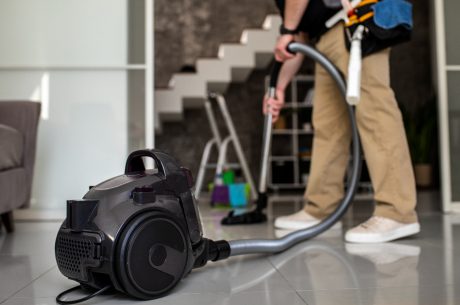Experiencing a flood in your home can be overwhelming. The aftermath of such an event leaves you with many challenges to tackle. With Florida’s weather patterns, floods can occur unexpectedly, disrupting daily life and causing significant damage. Understanding the right steps to take immediately after a flood can make a huge difference in recovery efforts.
Safety should be your top priority when dealing with the aftermath of a flood. Hazards like contaminated water, electrical issues, and structural damage can pose serious risks. Addressing these challenges calmly and methodically will ensure that you and your family remain safe during the cleanup process.
Once safety is secured, it’s essential to assess the damage and begin the recovery process. From drying out the house to preventing mold growth, each step is crucial in restoring your home to its pre-flood condition. Being thorough and acting quickly can help reduce potential long-term issues, making the recovery process smoother and more efficient.
After the Flood: Critical Steps to Protect Your Home
1. Ensuring Safety First
After a flood impacts your home, your initial focus should be on ensuring safety. The aftermath of flooding can be full of hidden dangers, so it’s vital to prioritize your well-being. Before doing anything, confirm that the area is safe.
Wear protective gear such as rubber boots and gloves to shield yourself from contaminated water or sharp debris. Avoid wading through floodwaters, as they can be hazardous and contain bacteria or chemicals.
Next, ensure that the electricity and gas supplies to your home are turned off. If it’s not safe to do so yourself, contact your utility company to handle it. These precautions help prevent electrical shocks or gas leaks, which can occur when water and appliances mix. Only enter your house once it’s declared safe by professionals.
Approach your home cautiously, looking for any structural damage, like sagging ceilings or weakened floors. Be mindful of animals displaced by the flood; they could be hiding in unusual spaces. Follow local news reports and listen to authorities’ advice. They’ll offer guidance to keep you updated on conditions in the area.
2. Initial Damage Assessment
Once safety concerns are addressed, it’s time to inspect your home for damage. Start with a detailed visual assessment to identify all affected areas. Begin with the exterior, checking for any structural issues, broken windows, or damaged roofing. Note any problems, as this information will be crucial when speaking with your insurance company later.
Move inside and go room by room. Look for signs of water damage on walls, ceilings, and floors. Basements and crawl spaces often sustain the most damage due to water pooling in these low areas. Check appliances for water infiltration and inspect your wiring for any apparent damage, as floods can cause electrical systems to short-circuit.
Create a checklist to ensure you cover everything:
- Walls and Ceilings: Look for stains, warping, or mold.
- Floors: Assess for swelling or buckling.
- Electronics and Appliances: Check for water exposure.
- Plumbing: Examine pipes for leaks.
- Furniture and Belongings: Identify what can be salvaged or needs replacement.
Document all damage with photos or videos. This evidence will help when you file your claim, proving the extent of the loss. Remember to communicate promptly with your insurance company to start the claims process and explore coverage options. Through careful assessment, you can plan the next steps effectively.
3. Prioritizing Drying and Water Removal
After assessing the damage, the next critical step is to remove water and begin the drying process. The faster you act, the better you can save your belongings and prevent further damage. Start by removing standing water using buckets or a wet-dry vacuum. If the flooding was severe, consider renting a water pump to expedite the process.
Once most of the water is cleared, focus on drying out the house. Open all windows and doors to increase ventilation. Use fans or dehumidifiers to speed up the drying process. These tools help reduce moisture levels in the home. Commercial-grade dehumidifiers are especially effective for large-scale drying needs, which often follow significant flooding events.
Also, remember to:
- Remove Wet Carpets and Rugs: Take them outside to dry, if possible, but consider replacing them if they are beyond salvage.
- Elevate Furniture: Use blocks to lift furniture off wet floors and allow airflow underneath.
- Discard Damaged Items: Remove completely soaked materials that cannot be dried or cleaned properly.
Act quickly to stop water from penetrating further into your walls and floors. Efficient drying is key to preventing mold growth and additional deterioration of your home.
4. Mitigating Mold and Long-Term Damage
Floodwaters can create an ideal environment for mold, which poses health risks and long-term damage to your home. Begin by thoroughly cleaning and disinfecting affected areas once you’re sure everything is dry. Use a solution of water and bleach to sanitize surfaces and inhibit mold spores from taking hold.
Keep your home well-ventilated during and after cleaning. Mold can start growing within 24 to 48 hours, so addressing this issue promptly is crucial. Observe all surfaces closely for early signs of mold, such as discoloration or musty smells, and treat them right away. If mold has developed extensively, consider seeking professional help to remove it safely.
Additional steps include:
- Replace Drywall: If sections are heavily damaged, cut away and replace them.
- Inspect Insulation: Replace any that got wet, as it can harbor moisture and mold.
- Evaluate Flooring: Look for signs of damage beneath carpets and tiles.
Professional restoration services can play a crucial role in dealing with extensive mold and repair needs. Their expertise ensures your home is thoroughly restored, preventing issues down the line.
Conclusion
Flood recovery involves structured steps to ensure your home is safe, dry, and less vulnerable to future problems. By focusing on safety, performing detailed assessments, efficiently removing water, and tackling mold growth, you lay a solid foundation for rebuilding. Each action not only protects your property but also your peace of mind as you restore normalcy to your life.
When faced with the daunting task of flood recovery, consider seeking support from experts who can handle complex restoration processes. Relying on skilled professionals protects your home from the unforeseen consequences of flooding.
Trust PuroClean of Naples to guide you through the flood recovery process. Our team stands ready to help you restore and refurbish your home with expert care and precision. Let us assist you in safeguarding your home, ensuring a thorough and comprehensive recovery with our flood restoration services!



